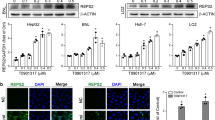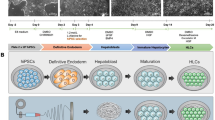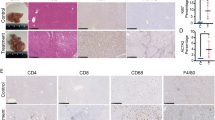Abstract
The incidence of hepatoma is high in the Chinese population. Searching for genes involved in the functions of the liver, especially genes specifically expressed in the liver, will facilitate an insight into the molecular basis of normal and abnormal liver functions. Based on a differentially displayed cDNA fragment, which was down regulated in hepatoma tissues, we cloned a novel cDNA of 957 bp, TCP10L (T-complex protein 10 like), from the human liver cDNA library. Northern hybridization of this novel gene in 30 adult human tissues was examined. The result revealed that TCP10L expressed specifically in the human liver and testis. The TCP10L contains a 645-bp open reading frame encoding a deduced protein of 215 amino acids. As the deduced protein was analyzed further, a typical leucine zipper motif was found. We firstly examined the transcriptional function of the TCP10L protein by transfecting recombinant pM-TCP10L into mammalian cells. The subsequent analysis based on the dual luciferase assay system showed that TCP10L significantly inhibited the expression of reporter genes. Compared with that of the negative control, the luciferase activity were down regulated in HEK293 and SK-HEP-1, CHO cells by about 2.6, 9.8, and 5.5 folds respectively. A mutated type of TCP10L was also constructed. It showed that the repression of TCP10L to the expression of the reporter gene almost completely decreased, suggesting that the leucine zipper structure is critical for TCP10L to play its role in regulation function. Then we transfected the recombinant TCP10L-EGFP into cells. The results indicated that TCP10L subcellularly located in nuclei, either in HEK 293 or SK-HEP-1 cells. In addition, human TCP10L was found comprised of five exons and four introns, and mapped to chromosome 21q22.11.
Similar content being viewed by others
Log in or create a free account to read this content
Gain free access to this article, as well as selected content from this journal and more on nature.com
or
References
Amati B, Brooks MW, Levy N, Littlewood TD, Evan GI, Land H (1993) Oncogenic activity of the c-Myc protein requires dimerization with Max. Cell 72:233–245
Bornberg-Bauer E, Rivals E, Vingron M (1998) Computational approaches to identify leucine zippers. Nucleic Acids Res. 26:2740–2746
Busch SJ, Sassone-Corsi P (1990) Dimers, leucine zippers and DNA-binding domains. Trends Genet. 6:36–40
Cremona O, Nimmakayalu M, Haffner C, Bray-Ward P, Ward DC, De Camilli P (2000) Assignment of SYNJ1 to human chromosome 21q22.2 and Synj12 to the murine homologous region on chromosome 16C3–4 by in situ hybridization. Cytogenet Cell Genet. 88:89–90
Edwards PA, Davis RA (1996) Biochemistry of lipids, lipoproteins and membranes, 3rd edn. New Comprehensive Biochemistry 31, Elsevier, Amsterdam, pp 341–362
Han ZG, Zhang QH, Ye M, Kan LX, Gu BW, He KL, Shi SL, Zhou J, Fu G, Mao M, Chen SJ, Yu L, Chen Z (1999) Molecular cloning of six novel krüppel-like zinc finger genes from hematopoietic cells and identification of a novel transregulatory domain KRNB. J Biol Chem 274:35741–35748
Houssaint E, Hallet MM (1988) Inability of adult circulating haemopoietic stem cells to sustain haemopoiesis in mouse fetal liver microenvironment. Immunology 64:463–467
Islam SD, Pilder SH, Decker CL, Cebra-Thomas JA, Silver LM (1993).The human homolog of a candidate mouse t complex responder gene: conserved motifs and evolution with punctuated equilibria. Hum Mol Genet 2:2075–2079
Ives JH, Dagna-Bricarelli F, Basso G, Antonarakis SE, Jee R, Cotter F, Nizetic D (1998) Increased levels of a chromosome 21-encoded tumour invasion and metastasis factor (TIAM1) mRNA in bone marrow of Down syndrome children during the acute phase of AML (M7) Genes Chromosomes Cancer 23:61–66
Kent WJ (2002) BLAT<PIC 001><PIC 002>The BLAST-like alignment tool. Genome Res 12:656–664
Kouzarides T, Ziff E (1989) Leucine zippers of fos, jun and GCN4 dictate dimerization specificity and thereby control DNA binding. Nature 340:568–571
Landschulz WH, Johnson PF, McKnight SL (1988) The leucine zipper: a hypothetical structure common to a new class of DNA binding proteins. Science 240:1759–1764
Lee YT (1983) Primary carcinoma of the liver: diagnosis, prognosis, and management. J Surg Oncol 22:17–25
Luscher B, Larsson LG (1999) The basic region/helix-loop-helix/leucine zipper domain of Myc proto-oncoproteins: function and regulation. Oncogene 18:2955–2966
Munch C, Ludolph AC (2001) Pharmacological treatment of ALS. Neurol Neurochir Pol 35 [Suppl 1) 41–50
Nagase T, Ishikawa K, Miyajima N, Tanaka A, Kotani H, Nomura N, Ohara O (1998) Prediction of the coding sequences of unidentified human genes. IX. The complete sequences of 100 new cDNA clones from brain which can code for large proteins in vitro. DNA Res 5:31–39
Perez S, Vial E, van Dam H, Castellazzi M (2001) Transcription factor ATF3 partially transforms chick embryo fibroblast by promoting growth factor-independent proliferation. Oncogene 20:1135–1141
Petti S, Testa U, Migliaccio AR, Mavilio F, Marinucci M, Lazzaro D, Russo G, Mastroberardino G, Peschle C (1985) Embryonic hemopoiesis in human liver: morphologic aspects at sequential stages of ontogenic development. Prog Clin Biol Res 193:57–71
Saito T, Guan F, Papolos DF, Lau S, Klein M, Fann CS, Lachman HM (2001) Mutation analysis of SYNJ1: a possible candidate gene for chromosome 21q22-linked bipolar disorder. Mol Psychiatry 6:387–395
Schiaffonati L, Tiberio L (1997) Gene expression in liver after toxic injury: analysis of heat shock response and oxidative stress-inducible genes. Liver 17:183–191
Sellers JW, Struhl K (1989) Change fos oncoprotein to a jun-independent DNA binding protein with GCN4 dimerization specificity by swapping “leucine zipper”. Nature 341:74–76
Smith MJ, Charron-Prochownik DC, Prochownik EV (1990) The leucine zipper of c-Myc is required for full inhibition of erythroleukemia differentiation. Mol Cell Biol 10:5333–5339
Sun Z, Zhu Y, Stjernsward J, Hilleman M, Collins R, Zhen Y, Hsia CC, Lu J, Huang F, Ni Z, et al (1991) Design and compliance of HBV vaccination trial on newborns to prevent hepatocellular carcinoma and 5-year results of its pilot study. Cancer Detect Prev 15:313–318
Xu XR, Huang J, Xu ZG, Qian BZ, Zhu ZD, Yan Q, Cai T, Zhang X, Xiao HS, Qu J, Liu F, Huang QH, Cheng ZH, Li NG, Du JJ, Hu W, Shen KT, Lu G, Fu G, Zhong M, Xu SH, Gu WY, Huang W, Zhao XT, Hu GX, Gu JR, Chen Z, Han ZG (2001) Insight into hepatocellular carcinogenesis at transcriptome level by comparing gene expression profiles of hepatocellular carcinoma with those of corresponding noncancerous liver. Proc Natl Acad Sci 98:15089–15094
Yeh FS, Yu MC, Mo CC, Luo S, Tong MJ, Henderson BE (1989) Hepatitis B virus, aflatoxins, and hepatocellular carcinoma in southern Guangxi, China. Cancer Res 49:2506–2509
Yu Y, Zhang C, Zhou G, Wu S, Qu X, Wei H, Xing G, Dong C, Zhai Y, Wan J, Ouyang S, Li L, Zhang S, Zhou K, Zhang Y, Wu C, He F (2001) Gene expression profiling in human fetal liver and identification of tissue- and developmental-stage-specific genes through compiled expression profiles and efficient cloning of full-length cDNAs. Genome Res 11:1392–1403
Author information
Authors and Affiliations
Corresponding author
Rights and permissions
About this article
Cite this article
Chen, Z., Yu, L., Wu, H. et al. Identification of a novel liver-specific expressed gene, TCP10L, encoding a human leucine zipper protein with transcription inhibition activity. J Hum Genet 48, 556–563 (2003). https://doi.org/10.1007/s10038-003-0075-6
Received:
Accepted:
Published:
Issue date:
DOI: https://doi.org/10.1007/s10038-003-0075-6



